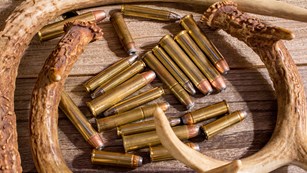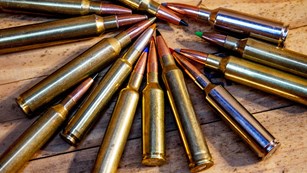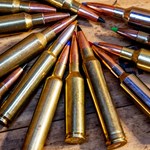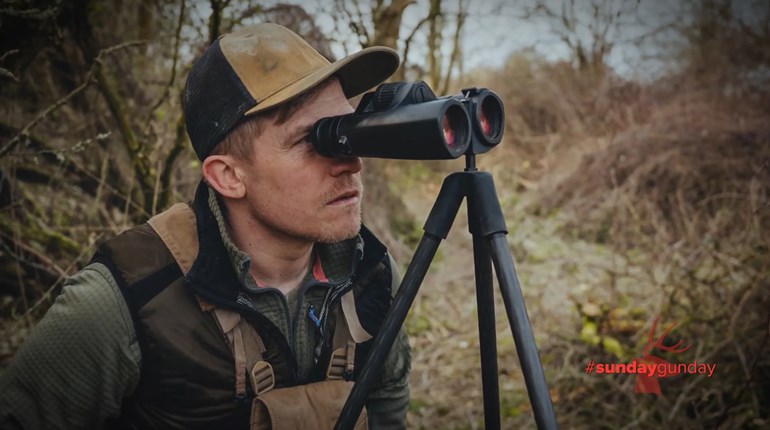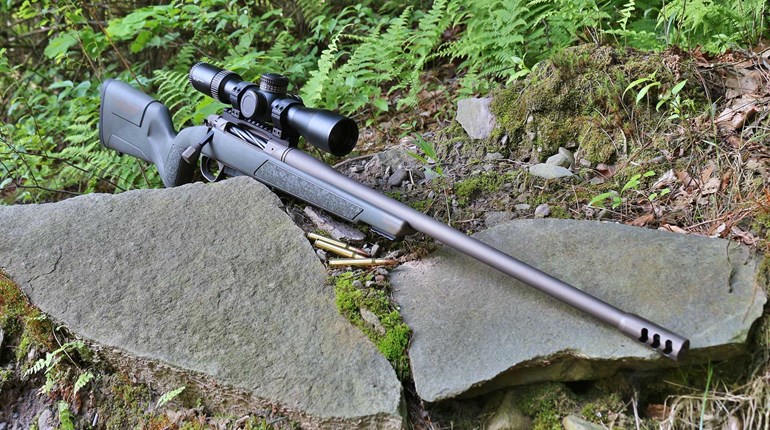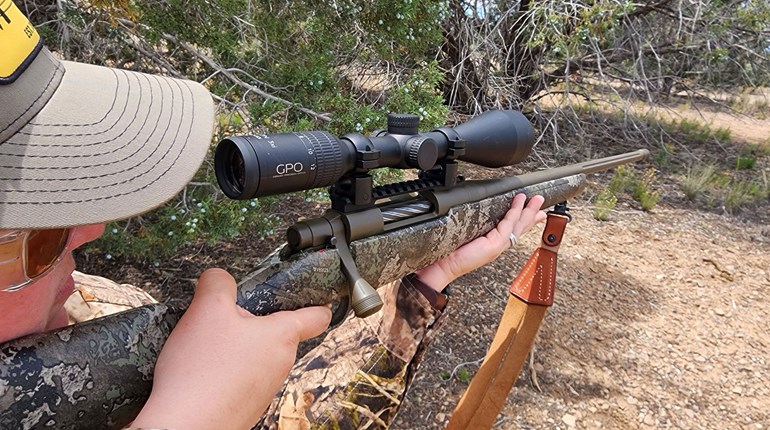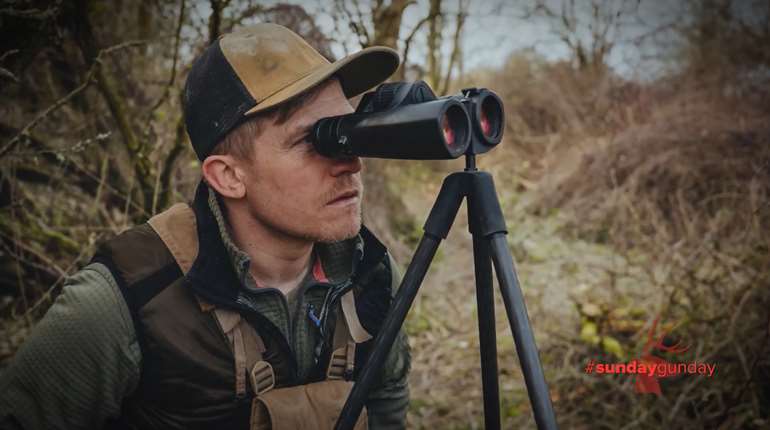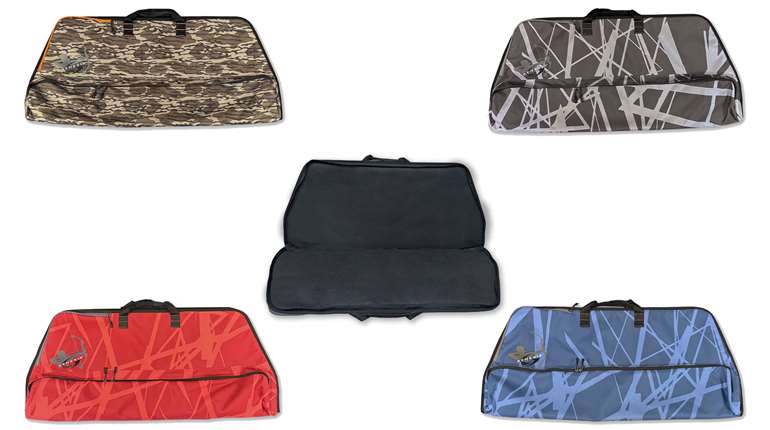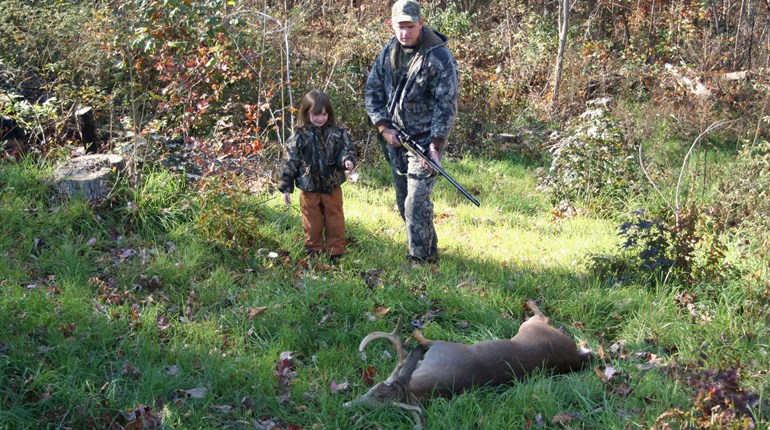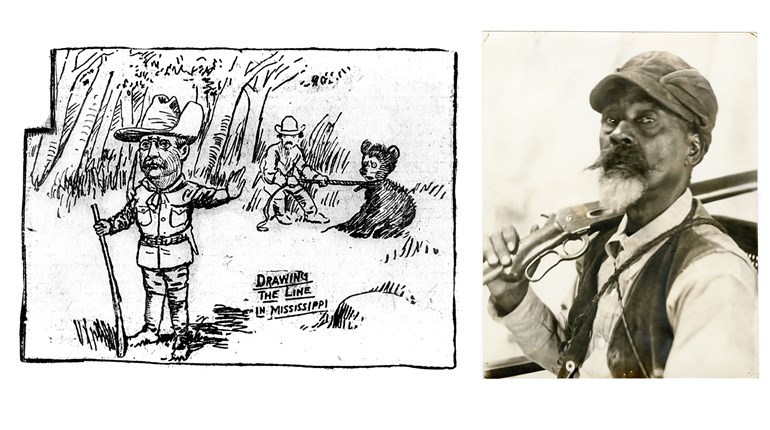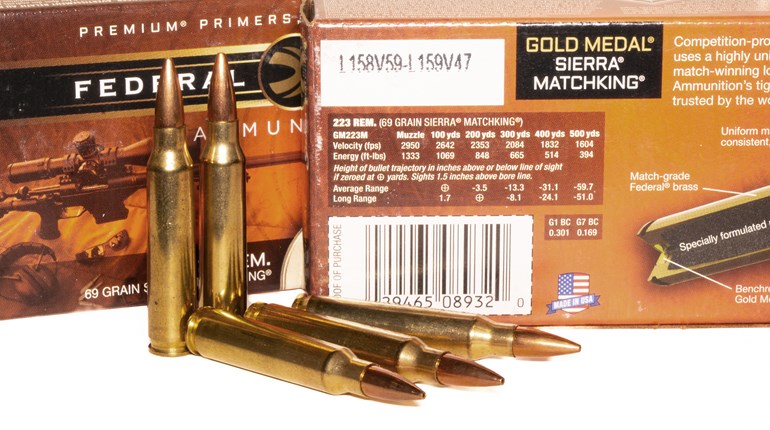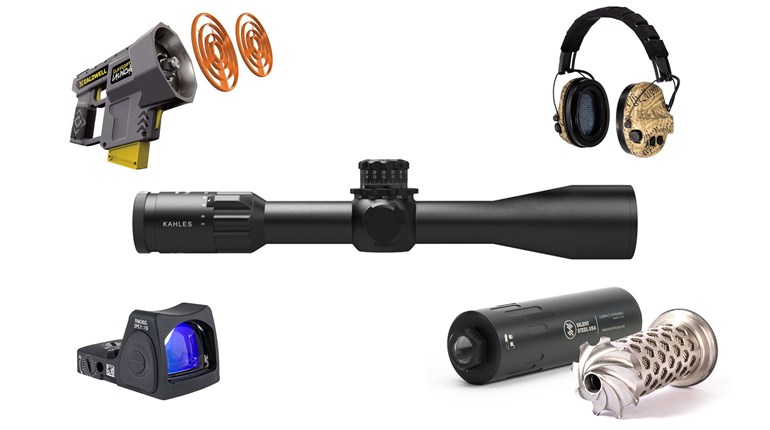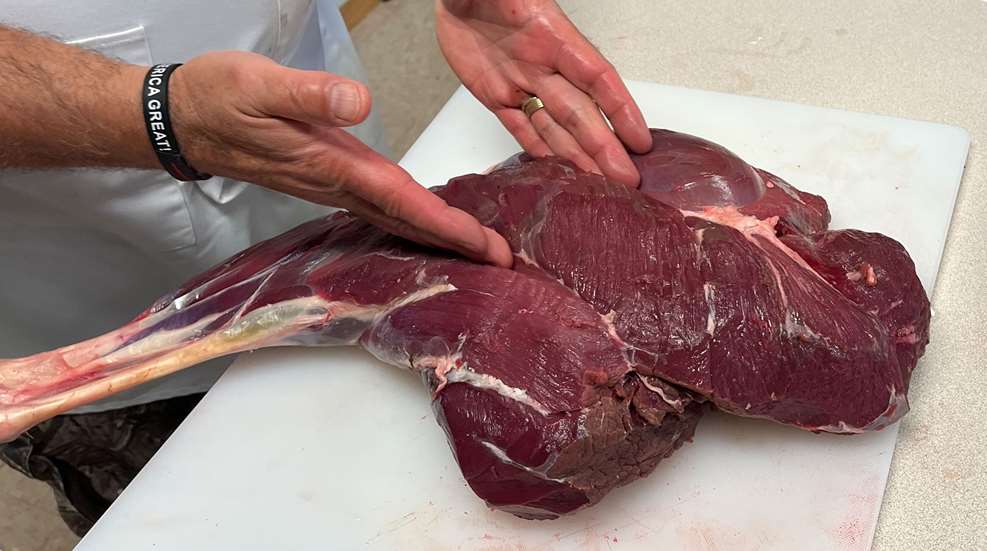
It was a cool morning, just right for a couple of light layers, as four of us sat in the truck and glassed a herd of pronghorns on a hillside that included at least one nice buck on the Crow Reservation in southeast Montana. My partner for the week, Justin Rackley, said, “Scott, you’re up.”
No one had to tell me twice. A pronghorn hunt could take a matter of moments or it could take three days. Honestly, I hoped for the former. Within the span of three days six of us hoped to shoot a buck, dress it, butcher it, process the meat and make a meal of our “earnings,” so a buck within sight of the road deserved attention. “Sure,” I said as I hopped from the back seat. I grabbed my pack and rifle and joined my guide, Lamar, from Legends and Long Warriors Outfitters, and made ready at the back of the truck.
The plan was simple: cross the two-lane blacktop, cross a small meadow and find a way across a creek then see what the terrain and vegetation looked like on the other side, and whether from there I could kill the buck.
The creek was deep, and the banks on both sides were steep; we moved right and left until Lamar found a good place to hop down, cross it and climb up the other bank to peer beneath a barbed wire fence. The pronghorns didn’t look that far away, and my laser rangefinder confirmed it. I whispered to Lamar “Let’s climb through the fence and crawl forward. They won’t see us in the tall grass so long as we stay low.”
Moments later I was set up on my pack in the shade of the tree line behind us, lying prone behind the Benelli Lupo in 6.5 PRC. The tall, green grass felt cool against my skin; I could lie here as long as needed. I shot another reading then looked behind me at my buddy Greg Ray for his reading: He mouthed, “Six-point-five,” my queue to dial up the Zeiss scope 6.5 clicks then focus, breathe and press the trigger. The buck stood 450 yards away; Greg’s advice meant I needed to dial up 6.5 clicks to send the 6.5mm bullet uphill and precisely to its target. I did so, and after a single shot the buck lurched, trotted a bit and fell dead.

Every hunter knows the work begins after the shot. After we tag a buck we must gut the animal, butcher it, process the meat into meal-sized portions for the freezer then cook the meat to our satisfaction and that of our guests. This is why Greg Ray’s Outdoor Solutions and his From Field to Table (FFTT) events have become popular.

Five years ago when Greg launched FFTT (fromfieldtotable.com), he held only two events. Now he schedules 23 annually. Attendees include not just hunters who have decided to seek proper instruction in the entire process but folks from urban and suburban America who were never exposed to hunting. Many attendees are in their 20s or 30s, and many are women. It’s an experience whose time has come. A pronghorn hunt (or hog, turkey or axis deer or combo hunt) includes four days’ lodging and meals; shooting instruction with Benelli Lupo rifles, Zeiss riflescopes and Federal ammunition; guided hunting for one buck; field-dressing and skinning with your guide; a butchering session with an industry pro who explains how to break down the primal cuts, separate muscle groups and package them; and hands-on cooking instruction with game taken during the hunt.
I was attracted by two topics: processing and cooking.
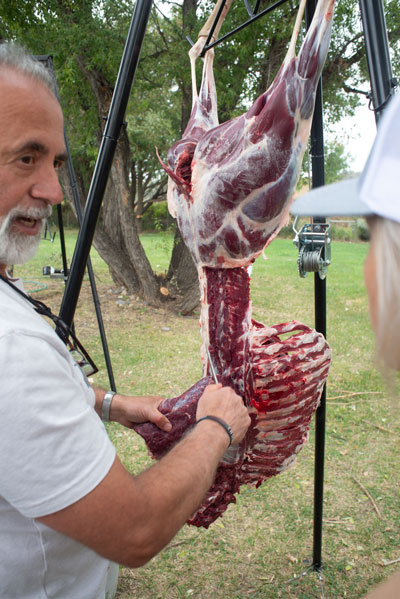
In camp we learned from two men. Chef Albert Wutsch, who’s 45-year career has included graduation from the Culinary Institute of America, leading kitchen staff across America and authoring several books on cooking game before retirement as department chair of Indiana University of Pennsylvania Academy of Culinary Arts, was our lead. Nowadays he combines his mastery of cooking with his passion for hunting. Chef Albert grew up in Montana, where he still lives and still makes a point of putting an elk in the freezer every year. Also in camp was Chef Joe Colistro, who showed up early for the next FFTT camp just because he loves this stuff. He calls himself a “road scholar chef.” Joe grew up in Oregon where his dad owned a catering business and a restaurant, and by age 10 he was cooking doves on toast with a sherry reduction sauce for breakfast. He joined the Navy out of high school and afterwards served 30 years in law enforcement. Then he became head chef at the Portland Yacht Club, wrote and published a cookbook with his dad and cooked in lodges from Alaska to New Mexico. He currently lives in Montana.
I’ve always said “butcher” is an apt description of what I do to an animal, so it was nice to learn how to break down a carcass and exactly what it means to “age” the meat. Albert explained that one can quarter an animal, and remove the backstraps and neck meat the first day, but you should not de-bone the meat or cut it into smaller pieces for at least 24 hours, until after the process of rigor mortis, after the muscles have stiffened then relaxed. If you cut the meat into meal-sized portions before this you will toughen it, and no cooking method will improve it. Of course one may age red meat on the bone before processing it; restaurants age cuts of beef for weeks. Dry-aging, for instance, is exactly what it sounds like: You hang the meat in a cooler for as long as you like: two weeks, 45 days … . Just understand you will lose some meat in the process, as it dries and the outer layers harden.

As you cut the meat into meal-sized portions you should label them if you ever expect to pull a recognizable cut from your freezer months later. Separate the meat from the leg by following the muscle groups and the tendons between them. Perhaps the most important lesson I learned from Chef Albert was identifying the cuts of a hindquarter before and after they are separated from the leg bone. This pays dividends toward determining what cut I’d like to eat and how to prepare it.
On the last evening our class prepared a multi-course meal we all relished. The menu included merguez gumbo with antelope dirty rice; bacon-wrapped Italian sausage meatballs with mozzarella cheese and marinara sauce; antelope curry stew with cous cous; and reverse sear sous vide antelope top round with mushroom Jus lie, spinach, snap peas and roasted peppers, smashed yams and Boursin, and stuffed plum tomato. Yeah—it was all good.

Antelope Merguez Gumbo (16 servings)
Chef Albert Wutsch
Ingredients
- 4 ozs. butter
- 1 cup flour
- 1 lb. antelope merguez sausage
- 2 lbs. antelope bottom round
- 2 cups diced onion
- 2 cups diced celery
- 1 cup red bell pepper
- 2 Tbsp garlic
- 1 can diced tomatoes
- ¼ cup tomato paste
- 1 qt. chicken broth
- ¼ cup Louisiana Hot Sauce
- 1 tsp black pepper
- ½ tsp cayenne pepper
- ½ tsp oregano
- ½ tsp thyme
- 2 bay leaf
- 1 Tbsp sugar
- 2 cups okra sliced/roasted at 400 degrees for 10 minutes
Garnish
- 1 tsp filé powder
- ¼ cup parsley
- ¼ cup green onions, chopped
- 2 qts. steamed rice
- 1 qt. rice, 2 qts. water, bring to boil, reduce to mud pot stage, cover, shut heat, steam 20 minutes
Instructions
- Remove fascia from meat, cut into 1-inch-long by 1/2-inch-wide by 1/8-inch-thick, reserve. Blend dry spices together, reserve. Mise en place (set together) all ingredients, reserve.
- In a large cast iron pot or Dutch oven, melt butter, add flour making roux, cook roux dark brown. Add meat and sausage, cook for 3-4 minutes, add spice blend. Add onion, celery, peppers and garlic. Add liquids, bring to boil, lower to simmer. While simmering, cook okra. Test tenderness of meat and adjust flavor, add okra.
- Add garnish, green onion, parsley and filé powder, and serve with steamed white rice or dirty rice.
Antelope Dirty Rice (16 servings)
Chef Albert Wutsch
Ingredients
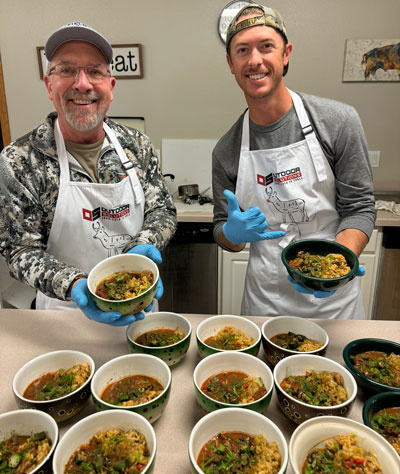
- 1 lb. antelope heart
- 1 lb. antelope merguez sausage, chopped
- ½ lb. bacon
- 2 qts. chicken broth
- ¼ cup garlic, minced
- 1 cup onions, diced
- 1 cup celery, diced
- 1 cup pepper, diced
- 1 Tbsp kosher salt
- 2 tsp black pepper
- 2 tsp paprika
- ¼ tsp coriander
- ¼ tsp cumin
- ¼ tsp oregano
- ¼ tsp cayenne pepper
- 3 cups long grain white rice
- ¼ cup butter
- 1 lb. antelope liver, chopped
Instructions
Wash heart and liver. Heat broth, add heart, simmer for 45 minutes. While heart is cooking, blend all dry spices, reserve. Remove heart, chop fine, reserve heart and reserve broth.
In braising pan, render the bacon, remove and reserve bacon. Add sausage and chopped heart, lightly brown. Add garlic, onions, celery, peppers and spices. Add rice, sweat, add broth, bring to boil.
While rice mixture is coming to boil, sauté chopped liver in butter, add to rice mixture. Cover and bake at 350 degrees for 15 minutes. Fluff with fork, garnish with chopped parsley and serve with hot sauce.




